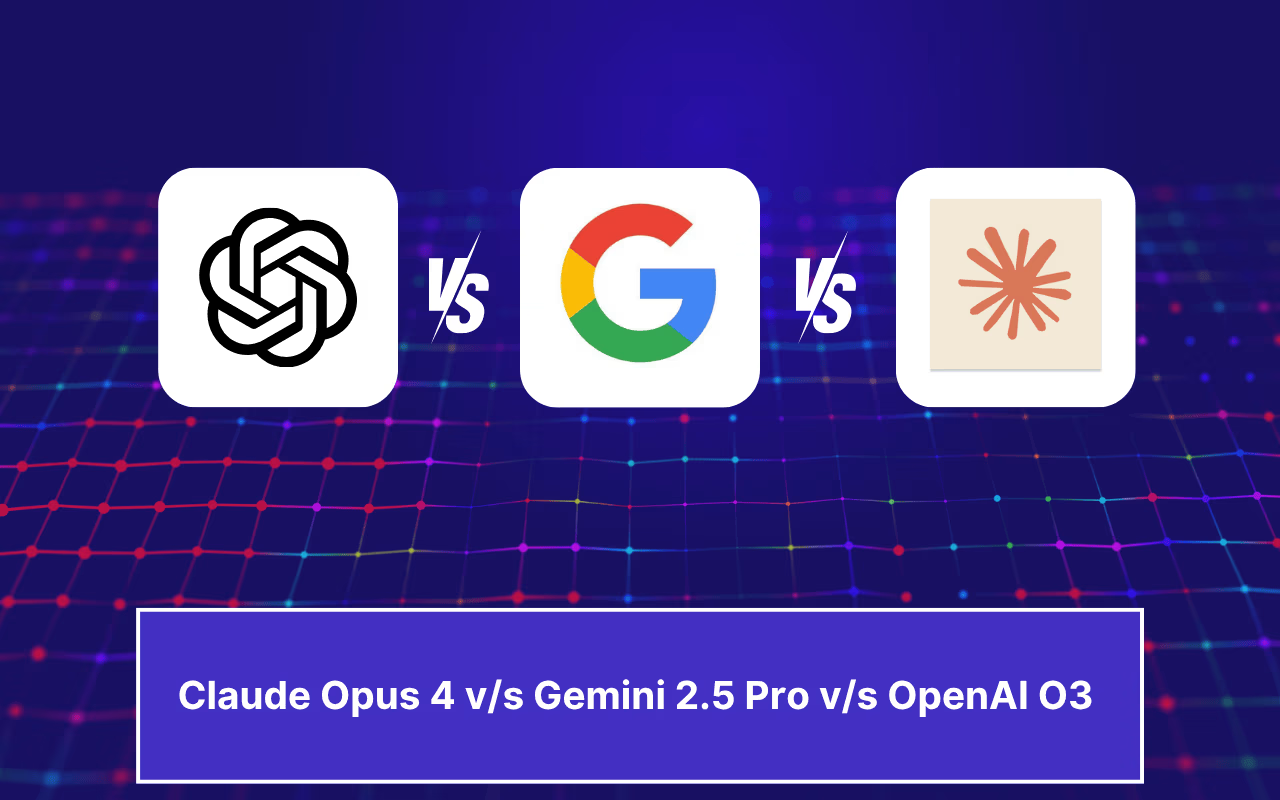Updated on January 31, 2025

The Rise of Generative AI
Using Generative AI without knowing the Art of Prompt Engineering is like having a Ferrari and not knowing how to drive well.
Generative AI came into prominence in late 2022 with the introduction of OpenAI’s ChatGPT. Since then, the tech world has gone through a major disruption, with the giants of the industry such as Google, Apple and Meta trying to play catchup.
ChatGPT still rules the roost though, and with the introduction of its latest model, GPT-4o, they are taking Generative AI to the next level.
To know generative AI well, however, you should know the art of prompt engineering.
Worry not. We got you covered. In this blog post, you will learn about:
- What is Prompt engineering
- Elements of Prompt Engineering
- Why Prompt Engineering is important in Generative AI?
- Examples of Good prompts
- How Prompt Engineering can help Businesses
- Future of Prompt Engineering
Before we do a deep dive into the world of prompt engineering, however, here are some of our blogs that you should definitely read for some context:
- GPT-4 Turbo vs. Claude Opus 3 vs. Google Gemini 1.5 pro- The best LLMs compared.
- ChatGPT 3.5 vs 4 – Major key differences
- Top Generative AI trends to watch out for in 2024.
Let us now begin with the basics, which is the very definition of Prompt engineering.
What is Prompt Engineering?
Prompt engineering is the art and science of writing precise, thoughtful inputs for Generative AI models, that will produce the desired output, from Large Language Models or other AI systems.
Skilled prompt engineers have a deep understanding of the AI model’s capabilities, limitations, and the other little idiosyncrasies. Effective prompt engineering requires a combination of technical skills, creative problem-solving, and an advanced understanding of language and communication.
Prompt engineering is a critical skill for people who seek to harness the full potential of AI systems. It enables them to extract meaningful insights, generate high quality outputs, and push the boundaries of what is possible with these powerful tools. It can be used by marketers to write more persuasive emails, data analysts to extract conclusions from large data sets; AI tools for coding can make it much easier to write coherent code.
So, what are some of the common elements of prompt engineering? We will take a look at this in the next section.
Elements of Prompt Engineering
Here are some of the elements of prompt engineering, listed in the form of a table for better understanding:
| Element | Description | Example |
| Clarity | What do you want to model to do? Clearly state it. | “Write a 300-word blog post on World War 3.” |
| Input constraints | Specify the constraints on the input data. | “Shorten this essay to 200 words or less.” |
| Output style | Set the style or tone of the desired response. | “Write a good letter of recommendation for a former student.” |
| Prompt Chaining | Breaking down a complex task into a series of smaller, interlinked prompts for a step-by-step approach. | “1. List 5 workouts for abs.2. For the first workout, give me the ideal set of reps. 3. How many calories will I burn with each rep.” |
| Examples and formatting | Give examples or guides to the AI model to guide the structure and format of the response. | Translate the following text to German: “Hello, may I know your name?” |
| Prompt Refinement | Improving prompts iteratively based on the model’s responses and performance feedback. | Initial prompt: “Explain photosynthesis.” – Refined prompt: “Explain the process of photosynthesis in plants, including the inputs, outputs, and chemical reactions involved.” |
| Persona prompting | Involves writing prompts that encourage the model to adopt to a specific persona, tone, or perspective. | “Respond as if you are a knowledgeable, professional chef, clearing the doubts about cooking instructions to people who are cooking this dish for the first time.” |
| Prompt conditioning | Pretraining or fine-tuning the language models on specific prompt formats. | Fine-tuning a model on a dataset of well-written prompts and responses in a specific domain, like legal or medical. |
Now that we have understood the basics of prompt engineering let us see how prompt engineering is important in Generative AI.
Importance of Prompt Engineering in Generative AI
Prompt engineering is the bridge between human intention and machine output and is thus a crucial part of generative AI. Writing a good prompt transforms vague queries into actionable instructions.
For instance, consider the task of generating a marketing campaign. Effective prompt engineering techniques can provide the AI with a rich context, which will include target demographics, brand persona, and the emotional resonance that you desire.
The prompt will read something like, “Imagine you are a seasoned advertising professional writing a campaign for a luxury watch brand that targets affluent, tech-savvy professionals. Now capture the essence of sophistication and exclusivity in a series of captivating taglines and product descriptions.”
Asking the AI engine to “Write a 300-word essay on World War 2” might yield a broad, unfocussed output. At the same time, “Write a 300-word essay on World War 2 from a German standpoint for the German audience” will direct the AI model to produce a concise, targeted output.
There are a variety of fields where prompt engineering finds its application. For example, in customer service, a prompt like, “As a friendly support agent, help a customer change their password in three steps,” makes sure that the AI provides clear, user-friendly instructions.
With the right application of prompt engineering, there is a boost in productivity and user satisfaction. Effective prompt engineering also mitigates the risks of inappropriate or irrelevant content in sensitive areas such as healthcare and finance.
Prompt engineering thus harnesses the full potential of generative AI, making interactions more meaningful and efficient.
We have seen how prompt engineering is important and the elements of prompt engineering. So now, let us take a look at good examples of prompts.
Examples of Good Prompts
We have classified this list into 3 different categories based on 3 functions that will be heavily impacted by the technology.
We will also showcase how the prompts elicit different responses when fed into different LLMs – ChatGPT, Anthropic Claude, and Google Gemini.
1. AI Prompt Examples for Marketing
Prompt Example: “Give me a good email subject line for a holiday sale. 3 variations.”
This is the response from ChatGPT

This Is What Google Gemini Gave Out:
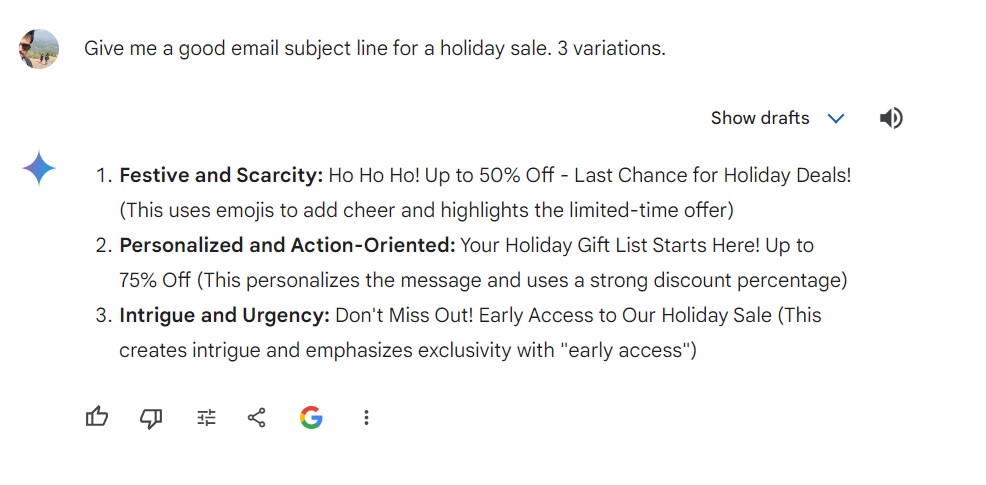
And This Is the Response from Anthropic Claude:

2. AI Prompts for Designers and Artists
AI is now being extensively used in the creative fields, and if you know how to write a decent prompt, you can now pass off as a graphic artist. Check out the responses we got from some of the image-generation tools with the right prompts.
Prompt example: a hidden waterfall with a house in the background, in watercolor
This is the image that Microsoft CoPilot generated

Canva also has its AI design feature, and, with the right prompts, can generate some pretty impressive images.
Here is the output from the same prompt that we used earlier, on Canva.

And finally, we asked Gemini to create an image using the same prompt, and the results were impressive, to say the least.
3. For Customer Service Agents
With the use of the right prompts, customer service agents can work wonders. We have identified a couple of areas where prompts that are strategically written can help customer service agents.
For starters, the right prompts can help study customer sentiments, identifying from the customer reviews what they are saying about your company.
Prompt Example: Help me analyze this review for Kommunicate for sentiment and user perception.
“What do you like best about Kommunicate?
The range of choices for creating intents is remarkable. Exploring different features to find the most practical and appealing result for our customers is enjoyable. I appreciate the addition of API integration, as it allows us to provide very specific support. Additionally, the team’s constant support, suggestions, testing, and adjustments, including for dashboards, are invaluable and greatly simplify our work.
What do you dislike about Kommunicate?
While I haven’t encountered any specific drawbacks with Kommunicate, I’ve noticed that certain processes or integrations may take a slightly longer time. However, with practice and patience, this minor inconvenience tends to improve over time.
This is an actual review of Kommunicate on G2, which you can read here.
We fed this review into ChatGPT, and the AI model gave us a summary of the review like we asked. Here is what the reply looks like.
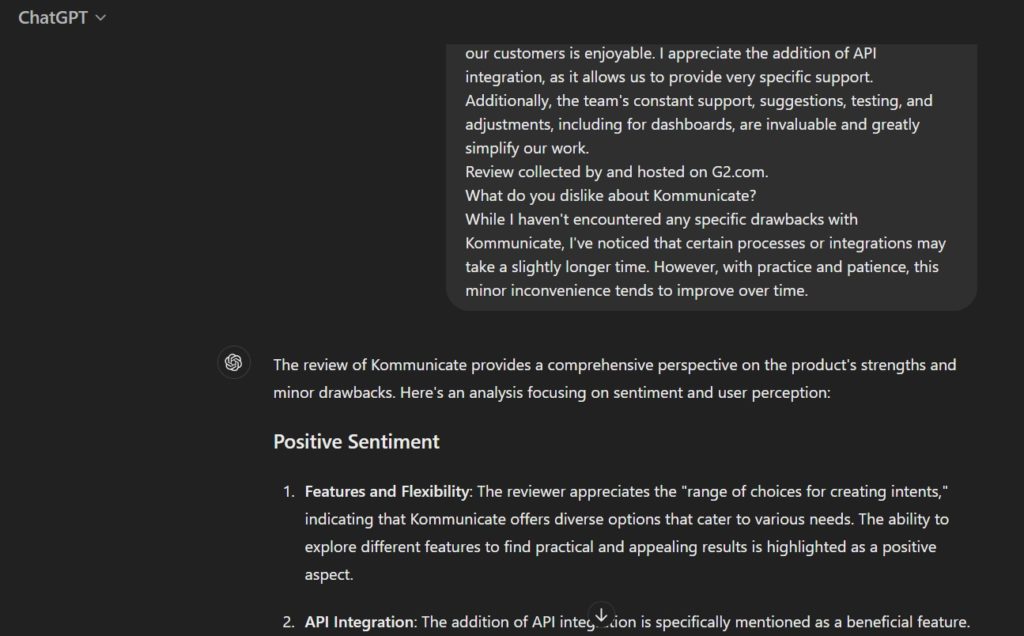
This Is the Response That Claude Gave Us:
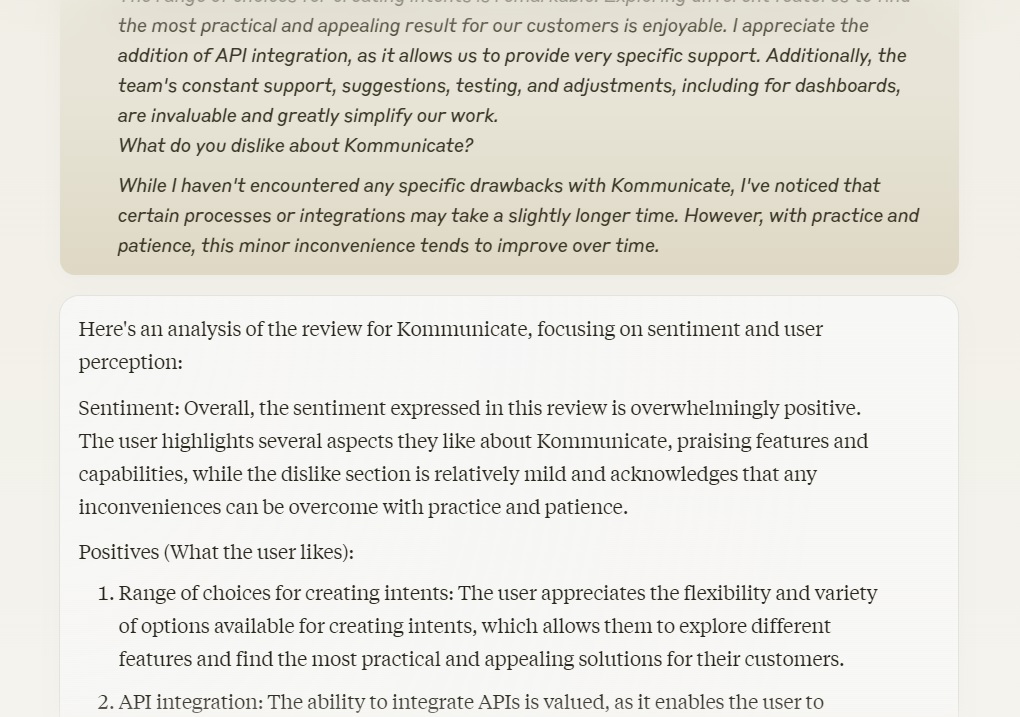
Finally, we asked Google Gemini to analyze the review, and this is the response we received.
4. For Customer Support Executives
Customer support is another function that is ripe for disruption using LLMs, and using the right prompts can go a long way in making the lives of customer support agents smoother.
Here is an example prompt for customer support executives that we fed into 3 of the most popular LLMs of the day.
Prompt example: “We are a company that makes Conversational AI chatbots. Suppose you are a customer support executive. You need to gather essential information from our customers to suggest the most suitable solutions. How would you do it?”
This is the response we got from ChatGPT:
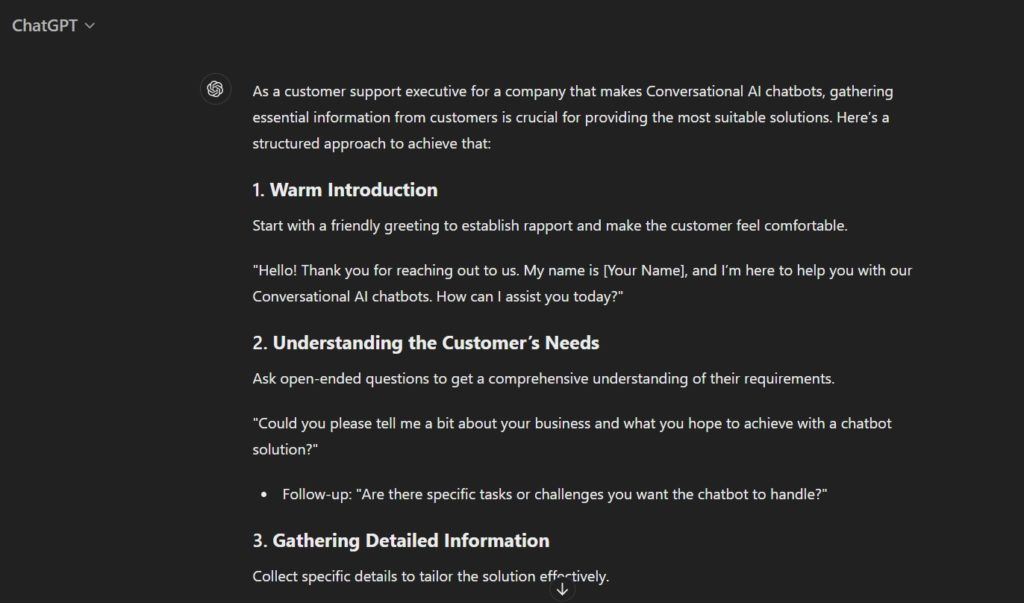
We used the same prompt on Claude, and got an entirely different response.
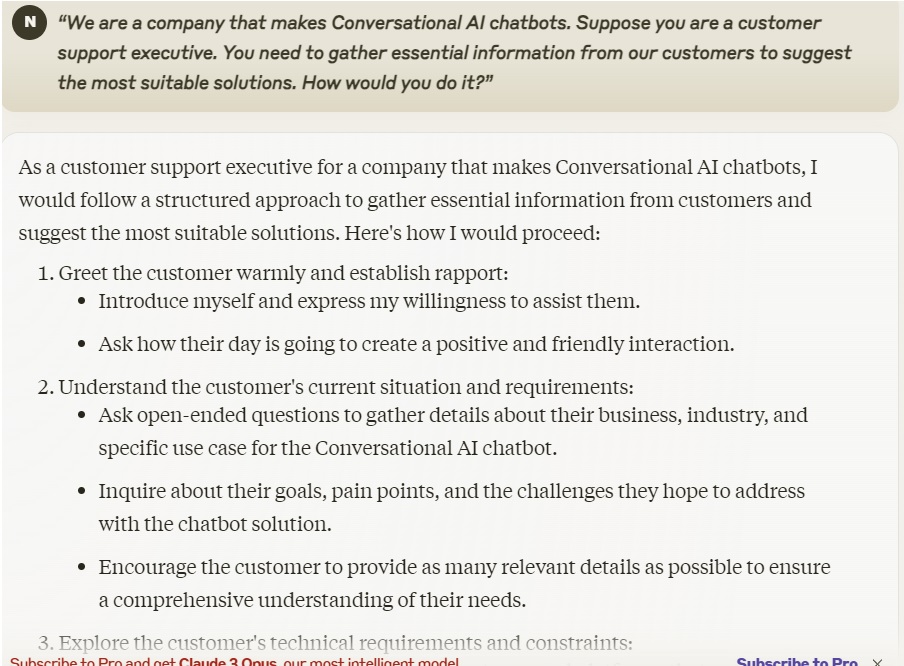
Finally, Google Gemini also gave us a different but very practical solution. This is what it looked like.
“Unlock Generative AI’s potential by mastering Prompt Engineering. Learn the essentials of Prompt Engineering with expert insights
As you can see, prompt engineering can be used in a variety of fields with phenomenal success. As the technology gets in the hands of more and more people, we can see new applications come to the forefront.
So, how is prompt engineering going to affect specific businesses? We explore in this next section.
How Prompt Engineering Can Help Businesses
Prompt engineering has the potential to revolutionize a lot of businesses, and we are listing down some of them here for better understanding.
i) Content Creation: Prompt engineering will enable businesses to create high quality, tailored content at scale. Creating well – structured prompts that incorporate desired style, tone and key information will help AI models create marketing materials that will align well with the brand’s voice and messaging.
Here are some of the videos which were generated just from a text prompt, using OpenAI’s video generator Sora.
ii) Customer Service: By carefully crafting prompts, businesses can train LLMs to understand and respond to customer queires with increasing accuracy. This helps in providing personalized and more efficient support.
iii) Code Generation: One of the chief applications of prompt engineering is to help developers reduce their workload. Developers can use efficient prompt engineering techniques to generate code snippets, automate repetitive tasks, or even create entirely new applications. This increases productivity and reduces the development time, thereby making the business a lot more efficient.
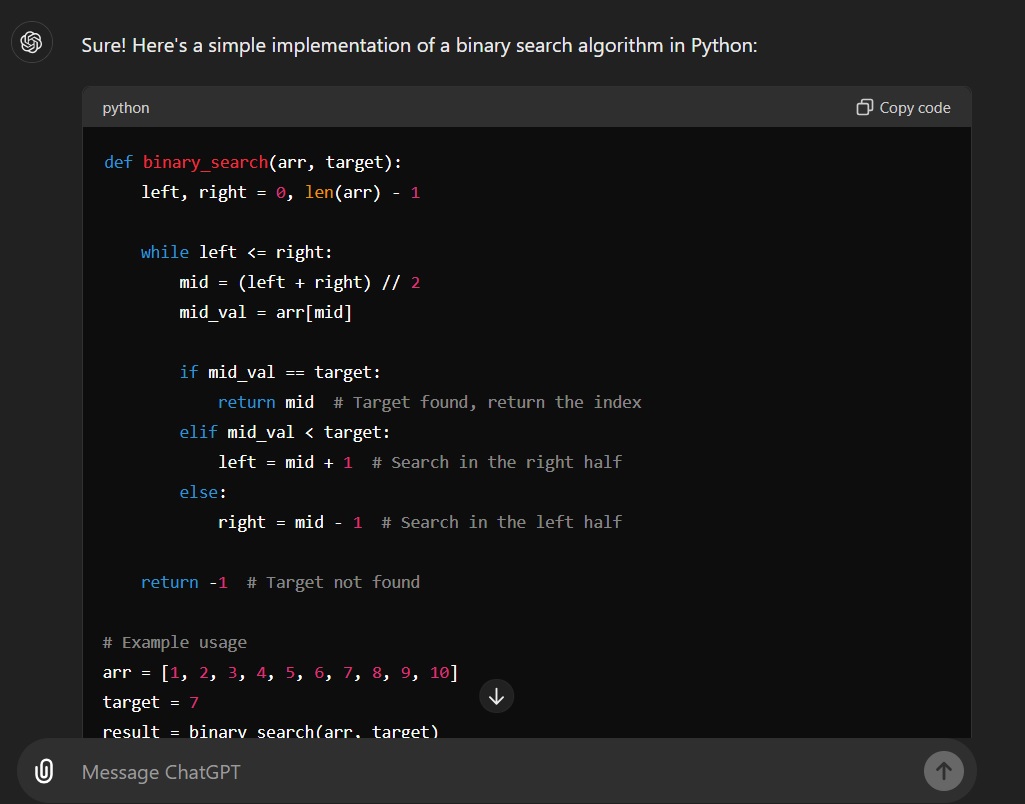
iv) Language Translation: Language translation was already possible with the help of tools such as Google Translate, but with effective prompts, businesses can enhance the context awareness and accuracy of language translation tasks. This will help businesses reach a truly global audience.
v) Data Analysis: With well-designed prompts, LLMs can glean valuable insights from large datasets and identify patterns. They can then make powerful recommendations based on this extracted data, helping the decision making process.
By mastering prompt engineering techniques, businesses can thus unlock the full potential of LLMs, streamlining processes and improving customer experiences.
But where is prompt engineering headed? We take a look at this in the final section of this article – The future of prompt engineering.
The Future of Prompt Engineering
As LLMs continue to evolve and become more advanced, the ability to create effective prompts will become increasingly crucial in unlocking their full potential.
Here are some of our key predictions:
- Simplifying Prompts: There wil be more sophisticated tools and techniques that will simplify the process of creating high-quality prompts. This will include the creation of prompt libraries, prompt optimization algorithms, and user-friendly interfaces.
The aim is to enable non-technical users to leverage the power of these models effectively.
- More Sophisticated Prompts: An improved understanding of the inner workings of AI models will lead to more sophisticated prompts. Users will thus be able to get finer control over the generated content. Advancements in NLU will lead to more intuitive and human-like interactions with AI.
- Education About Prompt Engineering: Most of the prompt engineers today are self-taught, but in the future, there will be educational programs and certifications for prompt engineers. These programs could integrate lessons from sustainable software engineering to teach scalable and efficient methodologies for prompt design. This will require close collaboration between AI researchers and domain experts, to create prompts that are not only technically sound but also ethically and contextually appropriate.
- AI Becoming Autonomous: As the ultimate step, as AI systems become more and more autonomous, we will see prompt engineering shifting from creating frameworks that allow AI to self-optimize its responses. This will be based on real-time feedback.
And that’s a wrap…
As the adoption of LLMs continues at a rapid pace, the demand for good prompt engineers will continue to surge.
By crafting well-designed prompts, businesses drive innovation, efficiency, and creativity across different applications, such as content creation, data analysis, and software development. Mastering this art gives companies an edge as generative AI evolves rapidly. Approach prompt engineering with curiosity, creativity, and iteration to push boundaries and unlock new realms of possibility. The future definitely belongs to those who are practitioners of The Art of the Prompt.

CEO & Co-Founder of Kommunicate, with 15+ years of experience in building exceptional AI and chat-based products. Believes the future is human + bot working together and complementing each other.


